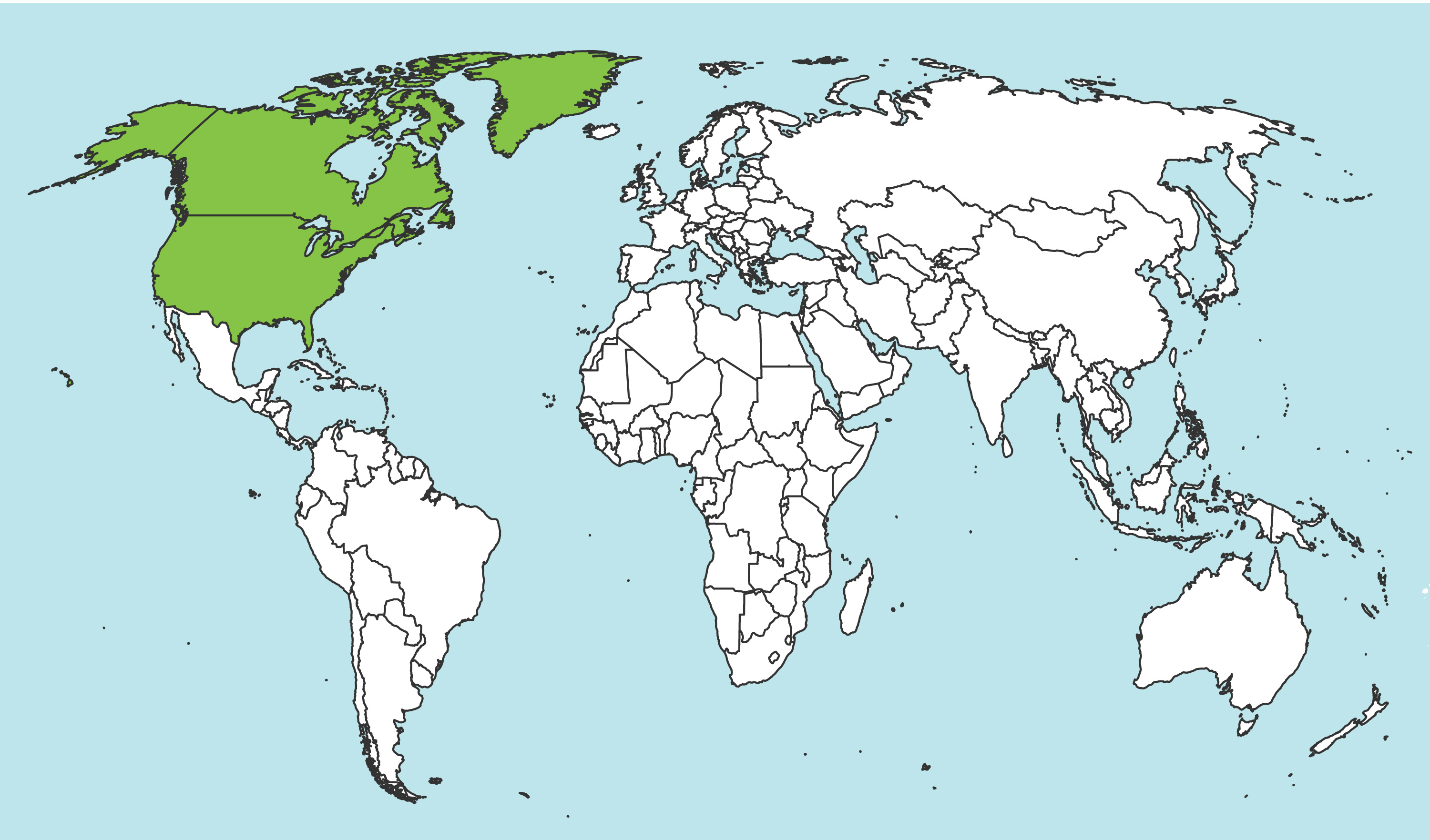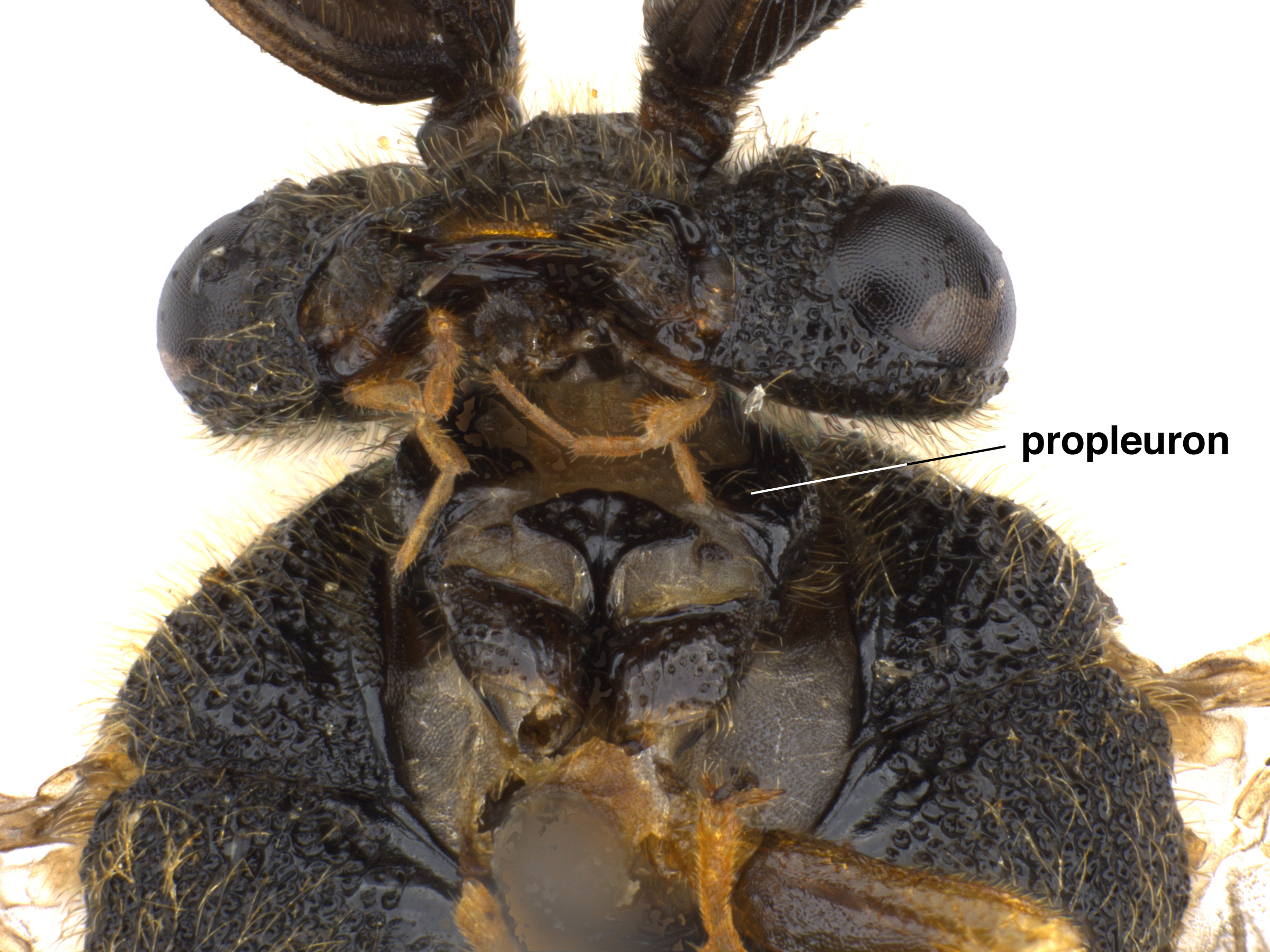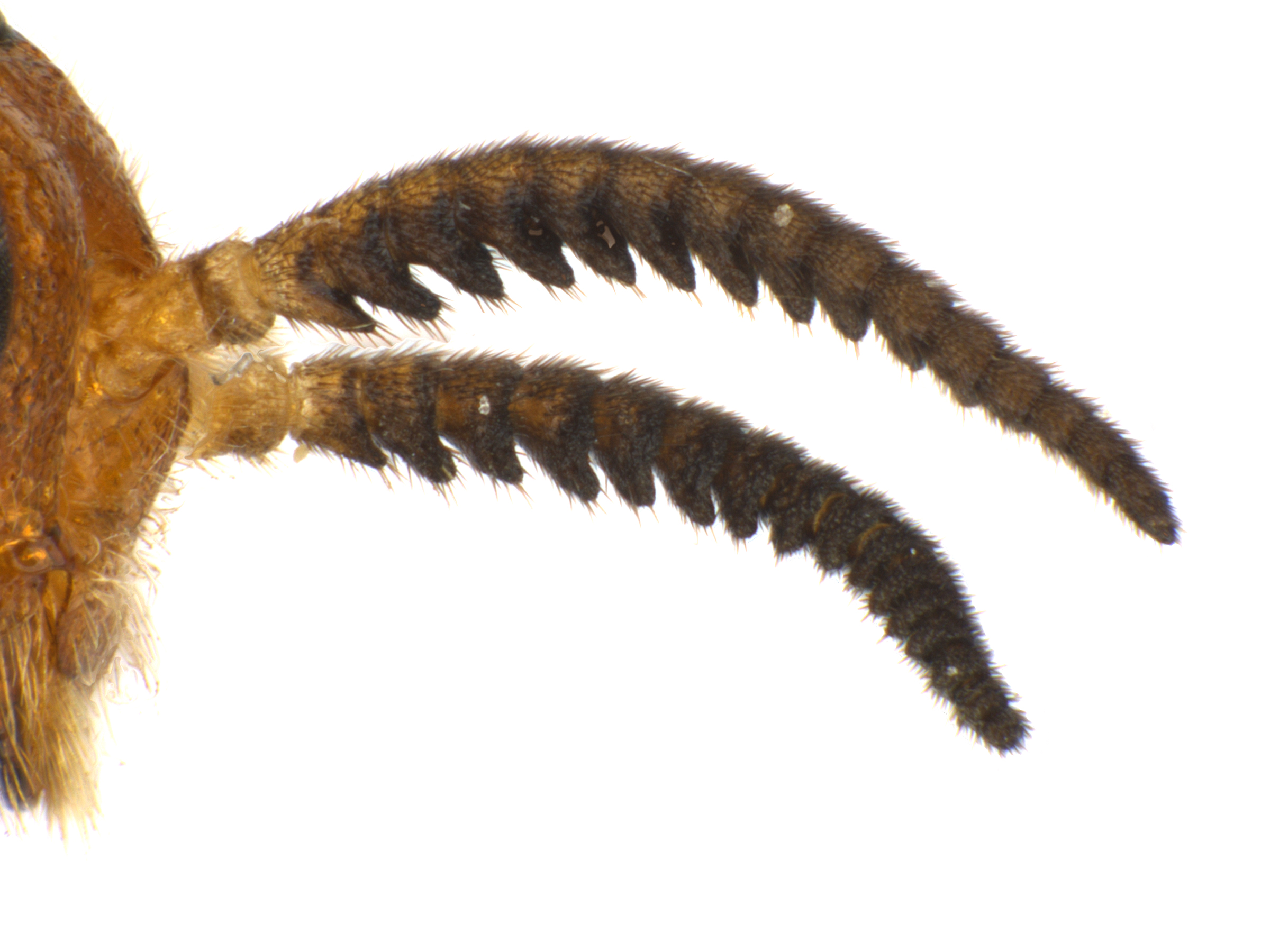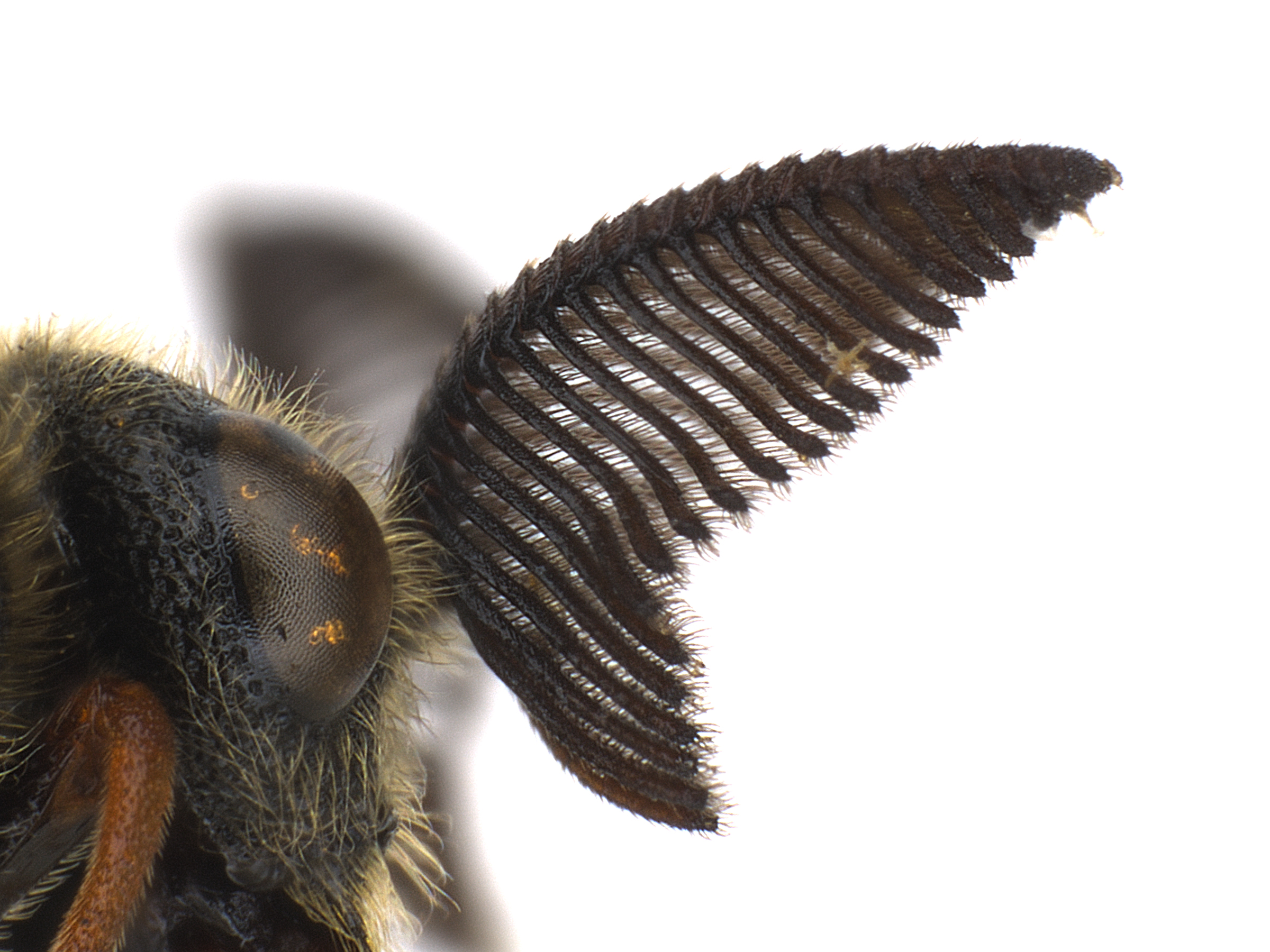Superfamily: Tenthredinoidea
Family: Tenthredinidae
Family common name: common sawflies
Subfamilies: Allantinae, Blennocampinae, Heterarthrinae, Nematinae, Selandriinae, Tenthredininae
The family Tenthredinidae is the most species-rich family of sawflies; this family makes up about 66% of all sawfly species (Taeger et al. 2010Taeger et al. 2010:
Taeger A, Blank SM, and Liston AD. 2010. World Catalog of Symphyta (Hymenoptera). Zootaxa 2580: 1-1064.). The family is divided into six subfamilies, each of which has their own diagnostic characteristics. Tenthredinidae sawflies are found throughout the world and are extremely diverse in feeding behaviors, host plants, larval morphology, and habitat (Goulet 1992Goulet 1992:
Goulet H. 1992. The genera and subgenera of the sawflies of Canada and Alaska: Hymenoptera. Symphyta. The insects and arachnids of Canada. Part 20. Agriculture Canada Publication.).
Most recently, the family is recorded as including 415 genera and 5721 species worldwide. About 88 genera and 940 species are NearcticNearctic:
describing the region of the Northern Hemisphere that includes North America south through northern Mexico
 in distribution (Taeger et al. 2018Taeger et al. 2018:
in distribution (Taeger et al. 2018Taeger et al. 2018:
Taeger A, Liston AD, Prous M, Groll EK, Gehroldt T, and Blank SM. 2018. ECatSymmdash;Electronic World Catalog of Symphyta (Insecta, Hymenoptera). Program version 5.0 (19 Dec 2018), data version 40 (23 Sep 2018). Senckenberg Deutsches Entomologisches Institut (SDEI), Muuml;ncheberg. https://sdei.de/ecatsym/ Accessed: 28 Jan 2020.).
See the fact sheet index for the 88 North American genera of Tenthredinidae.
 medially constricted as seen from above (Goulet 1992Goulet 1992:
medially constricted as seen from above (Goulet 1992Goulet 1992: short ventrally (Goulet 1992Goulet 1992:
short ventrally (Goulet 1992Goulet 1992: or clavateclavate:
or clavateclavate: , or occasionally with fewer than four comb-like structures (Goulet 1992Goulet 1992:
, or occasionally with fewer than four comb-like structures (Goulet 1992Goulet 1992: 1 not laterally fused to metapleuronmetapleuron:
1 not laterally fused to metapleuronmetapleuron: , distinctly separated (Goulet 1992Goulet 1992:
, distinctly separated (Goulet 1992Goulet 1992:The majority of Tenthredinidae larvaelarva:
the immature stage of holometabolous insects
 feed on various angiosperms, including many deciduousdeciduous:
feed on various angiosperms, including many deciduousdeciduous:
describing a tree that drops its foliage once a year and then re-grows it; often senescence occurs before winter and re-growth occurs in the spring
trees and flowering plants. Unlike other subfamilies, Selandriinae larvaelarva:
the immature stage of holometabolous insects
 exclusively feed on ferns and grasses (Smith and Middlekauff 1987Smith and Middlekauff 1987:
exclusively feed on ferns and grasses (Smith and Middlekauff 1987Smith and Middlekauff 1987:
Smith DR and Middlekauff WW. 1987. Suborder Symphyta. In: Stehr FW ed. Immature Insects. Kendall/Hunt Publishing Company. Vol. 1: 754 pp.). A few Tenthredinidae feed as adults, on flower nectar and pollen, or on other insects (Goulet 1996Goulet 1996:
Goulet H. 1996. Revision of the nearctic species of the Arcuata group of the genus Tenthredo with notes on the higher classification of the Tenthredinini (Hymenoptera: Symphyta, Tenthredinidae). Contributions of the American Entomological Institute 29 (2): 1-135.).
Sawflies in this family are similar in form to Diprionidae, Pergidae, and Argidae but can be distinguished by a lack of clearly serrateserrate:
toothed; often describing the ovipositor saw or antennae
 or pectinatepectinate:
or pectinatepectinate:
comb-like in form
 antennaeantenna:
antennaeantenna:
the sensory organ emerging from the front of the head, usually between the compound eyes and above the clypeus; includes the flagellum, scape and pedicel
 and the number of antennal segments (Goulet 1992Goulet 1992:
and the number of antennal segments (Goulet 1992Goulet 1992:
Goulet H. 1992. The genera and subgenera of the sawflies of Canada and Alaska: Hymenoptera. Symphyta. The insects and arachnids of Canada. Part 20. Agriculture Canada Publication.).
Larval morphology and life histories are diverse and difficult to generalize. Most species feed externally on foliage of the host plant, but others are leaf miners, fruit borers, stem borers or gall formers (Smith and Middlekauff 1987Smith and Middlekauff 1987:
Smith DR and Middlekauff WW. 1987. Suborder Symphyta. In: Stehr FW ed. Immature Insects. Kendall/Hunt Publishing Company. Vol. 1: 754 pp., Goulet 1992Goulet 1992:
Goulet H. 1992. The genera and subgenera of the sawflies of Canada and Alaska: Hymenoptera. Symphyta. The insects and arachnids of Canada. Part 20. Agriculture Canada Publication.).
World: Tenthredinidae is present on all continents except Antarctica. Except for introductions, they do not occur on most oceanic islands (Goulet 1992Goulet 1992:
Goulet H. 1992. The genera and subgenera of the sawflies of Canada and Alaska: Hymenoptera. Symphyta. The insects and arachnids of Canada. Part 20. Agriculture Canada Publication.).
North America: Representatives of the family occur throughout the continent (Smith and Middlekauff 1987Smith and Middlekauff 1987:
Smith DR and Middlekauff WW. 1987. Suborder Symphyta. In: Stehr FW ed. Immature Insects. Kendall/Hunt Publishing Company. Vol. 1: 754 pp.).